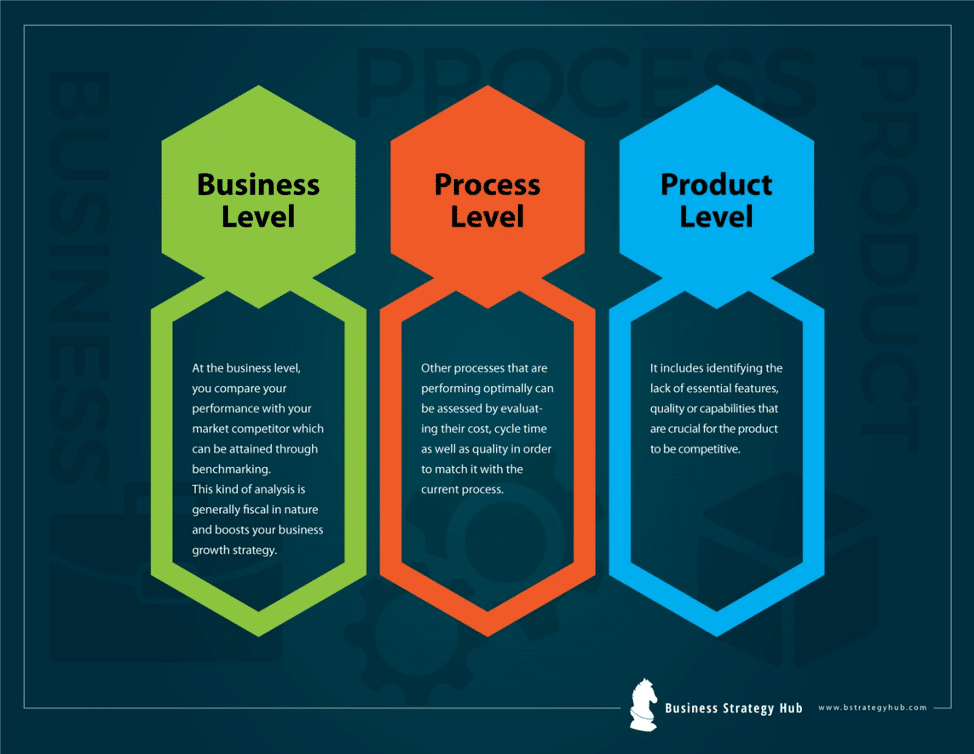Model Name : Gap Analysis
Year : 1965
Purpose : Product or Project Management | Strategy Development | Competitiveness | Strategic Planning | Marketing Plans | Resource Planning | Process Improvement | Performance Improvement
Who doesn’t want to stay ahead of the competition in the market? That is pretty much the main business objective all along.
And yet, most businesses fail to even remain competitive in the saturated market, let alone become successful enough to vie for becoming one of the industry front-runners. But WHY? Now that is a million dollar question – literally. Learn the answer, and your company could soon be generating revenue of millions.
To understand the “why” part, let’s start with another simple question – what is gap analysis? It may sound unconnected for now, but you really want to know the answer to that “why,” right? Then a short schooling session is for those of you who weren’t paying attention in business class:
What is Gap analysis?
In simple words, it is the process of assessing where you currently stand and where you want to be. A gap analysis is an internal business analysis method where you identify the preferred or targeted state of business performance and compare it with your company’s present state of performance.
Believe me when I tell you that a whole bunch of those organizations or businesses that failed to reach their business goals might still be contenders in the market competition if only they had analyzed their gaps on time.
Although a true gap analysis would need to be far more comprehensive, intricate, and wide-ranging, going over the following steps will help you get started:

Step # 1: Analyze Your Present State
Start your analysis with your existing state of performance. It should include an analysis of quantitative data such as the total number of sales calls made per week, as well as qualitative information such as team methodologies. Your analysis should include everything that you are presently doing to get a grasp on the “big picture”.
Step # 2: Recognize Your Targeted State
Now that you’ve drawn a clear, honest, and revealing big picture of your company operations, what’s next?
Well, now you need to identify and understand how your organization or team presently works.
For doing so, you need to be strategically idealistic and ask yourself questions like, where do you want your organization or business to be? Is there something that should be happening that hasn’t happened before? What could be happening that was happening before but changed? And most importantly, what is it that needs to happen to reach your goal?
“The bigger you dream, the bigger you play” is the thing you need to summon up while setting your business goals.
Step # 3: Bridge That Gap
Done identifying the gaps in your performance? The coming step is the most important, not to mention the hardest part: transitioning from one state to another.
Once you have identified the existing gaps, evaluate how they are keeping you from achieving your goals. Plan out how you are going to surpass the difficulties. Set clear objectives. This will enable you to actualize your transition.
Tools to Help You with Gap Analysis
The following gap analysis tools will come in handy for performing a thorough exploration of your present and future state of business affairs:
• SWOT: This tool emphasizes the strengths and weaknesses in the internal environment of an organization, and threats as well as opportunities in the external environment. SWOT helps you identify your market position.
• Fishbone: This tool enables you to determine the root cause of an effect or gap.
• McKinsey 7S: It helps to comprehend the gaps that may arise in the business, identify areas that need optimization, align departments and processes during an acquisition or merger and evaluate the consequences of future changes within the organization or business.
• Nadler-Tushman: This model is used to determine performance gaps within a business.
• Burke-Litwin Causal Model: It helps you comprehend the various mechanisms of a business when going through a transition.

Image Source: www.Creately.com
How often do you need to bridge that gap?
According to Maren Franklin (2006), essentially, some form of gap analysis should be done, every time you get a client request. Hence, it wouldn’t be unfair to say that there is no specific time to do it. We can conduct gap analysis whenever we feel like the business is lacking something or unable to reach the goal.
Let’s imagine a situation where a Business Analyst is working on the project plan, and the plan gets extended to a higher level. This is then an ideal time to conduct a gap analysis as you will have both the future as well as the current state of business performance right in front of you. The enterprise BA will compare the plan with the higher level requirements and identify the gaps that he/she missed to include in the previous requirements.
Can It Be Done for Your Product?
If you are new to the business with no background in business studies, you might be wondering if you can do a gap analysis for your product. My answer to your thoughts would be: Yes – why not?
Kubiak and Donald asserted in The Certified Six Sigma Handbook that gap analysis can be conducted at multiple levels:

Image Source:Kubiak, T., M & Benbow, D., W. (2009). The Certified Six Sigma Black Belt Handbook.
Ideally, you should be conducting a gap analysis on a regular basis (maybe monthly) to boost your marketing strategies. Gap analysis is an essential and useful tool, and the best part is that it can be conducted for almost any service, product, process, and project or business objective. However, the process of analysis can be altered according to the needs of your business.
It serves as a contribution to the roadmap development. So make sure you follow the roadmap during the execution. This will ascertain that the analyzed gaps are addressed while reaching the targeted future performance objectives.
Final Thoughts
So, are you ready to embrace success? Boost your market growth strategy and future business opportunities by continually bridging the gap on multiple levels.
References & more information
- Franklin, M. M. (2006). Performance Gap Analysis: Tips, Tools, and Intelligence for Trainers.
- Kubiak, T., M & Benbow, D., W. (2009). The Certified Six Sigma Black Belt Handbook.
5 Gap Analysis Tools to Identify and Close the Gaps in Your Business
Tell us what you think? Did you find this article interesting?
Share your thoughts and experiences in the comments section below.













Add comment